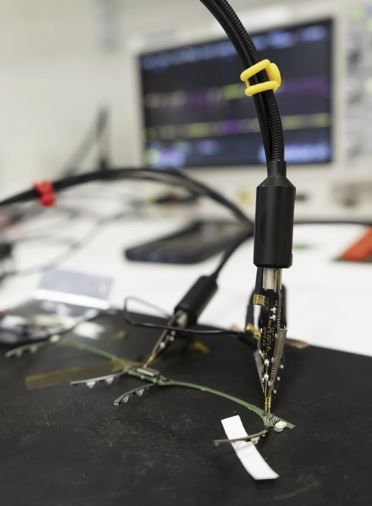The autofocus on eyeglasses arrives, will it be the end of the graduated lenses?

A Finnish startup is working on a technology that uses infrared sensors and liquid crystals to adjust the focus in just 0.2 seconds
The global glasses market, evaluated in 175 billion euros and annual growth of 8-9%, is faced with a potential revolution. Ixi, a Finnish startup, has set himself an ambitious goal: Solve the real vision problems of people. The technological giants invest billions in Virtual reality viewerssmart glasses Equipped with AI and camerasbut in reality also in devices capable of seeing and hearing (like i Nuance of Essilor Luxottica). The vision of IXIled by the co-founder and CEO Niko Eiden (Ex-nokia and co-founder of Varjo), is radically different. Eiden underlines that the giants of technology « are not really correcting the eye problems », but see glasses as a new platform wearable for or to capture multimedia content. IXI, on the other hand, focuses on the present of millions of people who face the daily view problem that falls.
The limitations of traditional glasses
The need for innovative solutions is pressing. Human vision is worsening rapidly, a phenomenon that scientists connect toexcessive time spent in front of the screenscombined with inadequate lighting conditions and closed sedentary lifestyles, with physiological aging.
Traditional lenses, such as those Progressive and bifocalcan present disadvantageswith distortions to the edges and a restricted section for reading. When you continually pass from one screen to another (smartphones and computers) or from road signs to the radio controls on the dashboard it can be frustrating. And with traditional progressive lenses the right angular of the lens must be sought by tilting the head hoping that the lighting of adequate. In addition, with age, the view worsens and the lenses must often be redone.
Technology
The technology developed by IXI is based on a SInvisible autofocus hyster which uses consolidated physical principles, those of cameras.
In the frame are hidden Infrared sensors which continuously monitor the movement of the eyes with the issue of luminous impulses: in this way the reflections that bounce from the eye are measured to determine if you are looking closely, from afar or intermediate distance. Finally, this information is transmitted through a microcontroller incorporated into the nasal bridge that he sends electric signals to lensescomposed of liquid crystals inserted between two layers of plastic.
Under the effect of the electric field, liquid crystals change orientation modifying the refraction index of the lens who manages to focus anything with a latency time of 0.2 seconds. All the electronics is enclosed in a frame with the size of a normal glasses
Future perspectives
Founded in 2021, thanks to a 36 million dollar funding (also thanks to the Alexa Found), IXI plans to keep the first public demonstrations of autofocus glasses by the end of 2025. Despite optimism, the path to the market still has significant challenges. IXI must overcome technical problems related to transparency of lenses And to the possibility of wearing glasses for a whole day.

The other startups
IXI is not the only company to work on this front. Even the startups French Laclarée (which however uses more swallowing components) and the Japanese Elcyo And Vixion They are developing similar autofocus glasses, but none have yet released a commercial product. Vixion presented its product at the Fiera del Futuro 2024 in Los Angeles where the Corriere Journalist Paolo Ottolina was able to do a test. Autofocus glasses, with a singular elongated -shaped design, have actually allowed the vision both from afar and up close. The Japanese Elcyo, spin-off of the University of Osaka, is developing a technology similar to IXI with electrically modifiable liquid crystals.
Despite the challenges and limitations, Eiden is optimistic: « If this technology is maintaining its promises and becomes accessible, although the expected initial cost will be high, it could actually redefine the way millions of people see the world » ..






